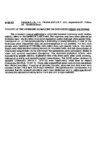Use este identificador para citar ou linkar para este item:
http://www.alice.cnptia.embrapa.br/alice/handle/doc/12824Registro completo de metadados
| Campo DC | Valor | Idioma |
|---|---|---|
| dc.contributor.author | FERREIRA, C. J. A. | pt_BR |
| dc.contributor.author | PARAIBA, L. C. | pt_BR |
| dc.contributor.author | URICI, E. M. T. | pt_BR |
| dc.date.accessioned | 2011-04-10T11:11:11Z | pt_BR |
| dc.date.available | 2011-04-10T11:11:11Z | pt_BR |
| dc.date.created | 1998-04-14 | pt_BR |
| dc.date.issued | 1995 | pt_BR |
| dc.identifier.citation | In: CONGRESS OF INTERNATIONAL ASSOCIATION OF THEORETICAL AND APPLIED LIMNOLOGY, 26., 1995, Sao Paulo, SP. Abstracts. Sao Carlos: USP, 1995. | pt_BR |
| dc.identifier.uri | http://www.alice.cnptia.embrapa.br/alice/handle/doc/12824 | pt_BR |
| dc.description | The duckweed Lemna valdiviana is commonly founded colonizing small shallow waters (lakes on the lowland in south Brazil. This organism may have been affected by herbicide input into lakes from aerial application and/or drainage office paddy fields. Clomazone (2- (2-chlorophenyl) methyl-4.4-dimethyl-3-isoxazolidinone) is one of the herbicides more fiequentely used as post-emergence in rice paddies. For this work assays were carried as EC50(96h) semi-statics with aseptic culture. The sterile fronds were abtained from material harvest on the paddy fields, and the concentration of Clomazone ranged from 14.0 to 229.0 mg/l. two procedures were considered: diluted in water and sprayed applicated Clomazone. The observed phytotoxic effects were evaluated by growth rate (kt), duplication time (Td), frond yield, plant yield, mortality, chlorophyll a and b and protochlorophyll concentration. The EC50 values obtained to sprayed Clomazone (Kt=31.7; Td=31.9) were significantly small than to diluted Clomazone (Kt=46.4; td=47.3). These dadta suggest that aerial route is more hazardous than diluted procedure. Presence of chlorotic, necrotic, abnormal and died frond were common at the 114.0 and 229.0 mg/l treatment. Recuperation test corroborated the evidence that the sprayed procedure were more deleterious and L. valdiviana doesn't recovery his reproductive ability at the 114.0 and 229.0 mg/l treatment. | pt_BR |
| dc.language.iso | eng | eng |
| dc.rights | openAccess | eng |
| dc.subject | Herbicide clomazone | pt_BR |
| dc.subject | Lemna valdiviana | pt_BR |
| dc.subject | Duckweed | pt_BR |
| dc.title | Toxicity of the herbicide clomazone on duckweed Lemna valdiviana. | pt_BR |
| dc.type | Resumo em anais e proceedings | pt_BR |
| dc.date.updated | 2018-08-17T11:11:11Z | pt_BR |
| dc.subject.nalthesaurus | toxicity | pt_BR |
| dc.format.extent2 | p.235 | pt_BR |
| riaa.ainfo.id | 12824 | pt_BR |
| riaa.ainfo.lastupdate | 2018-08-17 -03:00:00 | pt_BR |
| dc.contributor.institution | C.J.A. FERREIRA, EMBRAPA-CNPMA; LOURIVAL COSTA PARAIBA, CNPMA; E.M.T. URICI. | pt_BR |
| Aparece nas coleções: | Resumo em anais de congresso (CNPMA)  | |
Arquivos associados a este item:
| Arquivo | Descrição | Tamanho | Formato | |
|---|---|---|---|---|
| 1995PL003ParaibaToxicity3415.pdf | 124,88 kB | Adobe PDF |  Visualizar/Abrir |









